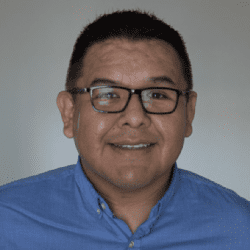
Title: Institute Scholars
Location: Navajo Nation
Education
BS, Arizona State University
MD, University of New Mexico School of Medicine
Biography
Growing up on the Navajo reservation, I saw my firefighter father repeatedly respond to the alcohol-related tragedies. My mother, an elementary school teacher’s assistant, is all too familiar with student enduring the consequences of living in households suffering from substance addictions.
I resolved early to tackle these tough challenges by studying psychology, biology and applying to medical school. After graduating Arizona State University, I attended and earned my medical degree from the University of New Mexico’s School of Medicine. Faced with picking a specialty and hanging on to an interest in addiction medicine, I decided on psychiatry. As a psychiatry resident physician at UNM university hospital, I saw my patients stories crystallize into two themes: one being that drug experimentation began in their early adolescent years and the second being that experimentation, more often than not, occurred in the context of a psychological stressor.
As I continued to focus on addiction psychiatry, I began to develop an interest in working with adolescents. So, I applied and started a child and adolescent psychiatry fellowship at the University of California, San Francisco. During my inpatient and residential child psychiatry rotations, I provided care to teenagers using substances ranging from nicotine and marijuana to intravenous use of opiates and methamphetamine. I often saw co-occurring psychiatric disorders in my adolescent patientsmental health issues and ongoing addictions. During my fellowship, I soon witness that teenage patients were not merely small adults but individuals with adult size bodies whose brain circuitries were still developing and they existed in multiple complex systems (e.g., home, school, social, sports teams, etc.) that is to say much more complicated than treating adults.
While the lack of evidence about effective treatment for adolescent addiction is sparse, even more, disheartening is the discharge of teenagers with a dual diagnosis to an outpatient world ill-prepared and scared to provide the necessary level of care. Now working in the Bay Area, I see that families from various socioeconomic statuses fending for themselves in a system that doesn’t adequately address their problems.
As I continue to develop and embark on my career path in public health and psychiatry, I have learned the need to maintain and to be mindful of development and cultural perspectives. I felt that the courses and mentoring offered by JHCIH were perfect as I plan to provide for and research addictions among adolescent in American Indian and Alaskan Native Communities. I hope to continue my studies and training with the Center for American Indian Health as I transition to become an addiction psychiatry fellow at Dartmouth-Hitchcock Medical Center.